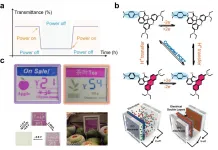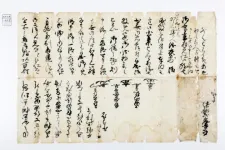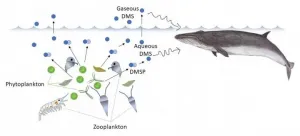(Press-News.org) COVID-19, the disease caused by the pandemic coronavirus SARS-CoV-2, is primarily regarded as a respiratory infection. Yet the virus has also become known for affecting other parts of the body in ways not as well understood, sometimes with longer-term consequences, such as heart arrhythmia, fatigue and "brain fog."
Researchers at University of California San Diego School of Medicine are using stem cell-derived organoids -- small balls of human cells that look and act like mini-organs in a laboratory dish -- to study how the virus interacts with various organ systems and to develop therapies to block infection.
"We're finding that SARS-CoV-2 doesn't infect the entire body in the same way," said Tariq Rana, PhD, professor and chief of the Division of Genetics in the Department of Pediatrics at UC San Diego School of Medicine and Moores Cancer Center. "In different cell types, the virus triggers the expression of different genes, and we see different outcomes."
Rana's team published their findings February 11, 2021 in Stem Cell Reports.
Like many organs, the team's lung and brain organoids produce the molecules ACE2 and TMPRSS2, which sit like doorknobs on the outer surfaces of cells. SARS-CoV-2 grabs these doorknobs with its spike protein as a means to enter cells and establish infection.
Rana and team developed a pseudovirus -- a noninfectious version of SARS-CoV-2 -- and labeled it with green fluorescent protein, or GFP, a bright molecule derived from jellyfish that helps researchers visualize the inner workings of cells. The fluorescent label allowed them to quantify the binding of the virus' spike protein to ACE2 receptors in human lung and brain organoids, and evaluate the cells' responses.
The team was surprised to see approximately 10-fold more ACE2 and TMPRSS2 receptors and correspondingly much higher viral infection in lung organoids, as compared to brain organoids. Treatment with viral spike protein or TMPRSS2 inhibitors reduced infection levels in both organoids.
"We saw dots of fluorescence in the brain organoids, but it was the lung organoids that really lit up," Rana said.
Besides differences in infectivity levels, the lung and brain organoids also differed in their responses to the virus. SARS-CoV-2-infected lung organoids pumped out molecules intended to summon help from the immune system -- interferons, cytokines and chemokines. Infected brain organoids, on the other hand, upped their production of other molecules, such as TLR3, a member of the toll-like receptor family that plays a fundamental role in pathogen recognition and activation of innate immunity
Rana explained that, while it might seem at first like the brain organoid reaction is just another form of immune response, those molecules can also aid in programmed cell death. Rana's team previously saw a similar brain cell response to Zika virus, an infection known to stunt neonatal brain development.
"The way we are seeing brain cells react to the virus may help explain some of the neurological effects reported by patients with COVID-19," Rana said.
Of course, organoids aren't exact replicas of human organs. They lack blood vessels and immune cells, for example. But they provide an important tool for studying diseases and testing potential therapies. According to Rana, organoids mimic the real-world human condition more accurately than cell lines or animal models that have been engineered to over-express human ACE2 and TMPRSS2.
"In animals over-expressing ACE2 receptors, you see everything light up with infection, even the brain, so everyone thinks this is the real situation," Rana said. "But we found that's likely not the case."
In addition to their work with the pseudovirus, the team validated their findings by applying live, infectious SARS-CoV-2 to lung and brain organoids in a Biosafety Level-3 laboratory -- a facility specially designed and certified to safely study high-risk microbes.
Now Rana and collaborators are developing SARS-CoV-2 inhibitors and testing how well they work in organoid models derived from people of a variety of racial and ethnic backgrounds that represent California's diverse population. They were recently awarded new funding from the California Institute for Regenerative Medicine to support the work.
INFORMATION:
Co-authors of the study include: Shashi Kant Tiwari, Shaobo Wang, Davey Smith and Aaron Carlin, all at UC San Diego.
Disclosure: Tariq Rana is a founder of ViRx Pharmaceuticals and has an equity interest in the company. The terms of this arrangement have been reviewed and approved by the University of California San Diego in accordance with its conflict of interest policies.
If Affordable Care Act protections for pre-existing condition coverage are no longer available, the coronavirus pandemic would leave many Americans - a disproportionate number of whom are people of color - without health insurance, a new Oregon Health & Science University study indicates.
Published in the Journal of the American Board of Family Medicine, the study's findings reveal a third of the more than 7,500 COVID-19 patients who received care at U.S. community health centers between March and October 2020 did not have a pre-existing condition prior to contracting the novel ...
UCLA RESEARCH BRIEF
Enrique Rivero
FINDINGS
Older people correctly ascertained basic information such as dosage and duration of use for more than 70% of the medications they were prescribed, regardless of whether their physician explained it during an office visit. But when physicians failed to verbally provide information about potential side effects, people incorrectly assumed that about 55% of their prescribed medications had none. Even when physicians did discuss possible side effects, their patients incorrectly assumed there were no side effects for 22% of the medications.
BACKGROUND
There is a shortage of data about how well people understand basic information about the medications they are prescribed. This information ...
The development of low-energy-consumption and user-friendly electronic displays has become a long-term goal for future global sustainable development. Bistable electronic display, which requires very little electric drive to turn pages without consuming additional power to continuously display information/images, is one of the very good potential alternatives. Reflective display technologies with partial/complete bistable characteristics include e-ink, cholesteric liquid crystal, and electrochromic technologies, etc. They display information in light reflection mode, which can still be read under high-brightness outdoor sunlight and relatively dark indoor environments. It is also very friendly to the ...
The yellow fever mosquito (Aedes aegypti) is a main vector of deadly diseases like dengue fever, chikungunya, and the Zika virus, which result in hundreds of thousands of deaths worldwide each year. Because Ae. aegypti prefers to bite humans and there are no vaccines for many of these diseases they carry, developing methods to control these insects is imperative in the fight to control illness.
In a study recently published in Proceedings of the National Academy of Sciences, a Yale-led research team developed a new method to track how Ae. aegypti move through the environment. ...
Live tracking and analyzing of the dynamics of chimeric antigen receptor (CAR) T-cells targeting cancer cells can open new avenues for the development of cancer immunotherapy. However, imaging via conventional microscopy approaches can result in cellular damage, and assessments of cell-to-cell interactions are extremely difficult and labor-intensive. When researchers applied deep learning and 3D holographic microscopy to the task, however, they not only avoided these difficultues but found that AI was better at it than humans were.
Artificial intelligence (AI) is helping researchers decipher images from a new holographic microscopy technique needed to investigate ...
The finding, recently published in the prestigious scientific journal Proceedings of the National Academy of Sciences of the United States of America (PNAS), has provided the scientific community a novel understanding to the molecular regulatory mechanisms behind the function of the blood-CSF barrier and lays the groundwork for developing novel therapeutic strategies for preventing and treating neurodevelopmental disorders.
Dysfunction of blood-cerebrospinal fluid barrier is common in various neurological diseases
CSF is a clear, colourless body fluid that surrounds the brain and spinal cord, providing them a cushion against injuries. It also ...
In Japan, the suppression of Christianity increased from the end of the 16th century to the beginning of the 17th century, and many missionaries and Japanese believers were martyred during this period. New research has uncovered a letter indicating that Hosokawa Tadaoki, lord of the Kokura domain from 1600 to 1620, ordered the execution of Diego Hayato Kagayama, a chief vassal of the Hosokawa family, and the banishment of Genya Ogasawara, both Christians. The punishment and martyrdom of both men was previously known only from reports by Jesuit missionaries to Rome. The discovery of primary historical documents created within the Hosokawa ...
Integrated photonics was rejuvenated as Si starting challenging the dominant position of conventional III-V compound semiconductors at onset of the new millennium. Heterogeneous Si photonics utilizes wafer bonding to transfer functioning non-Si thin film onto Si substrate to make up missing or weak optoelectronic functionalities of Si material. In the past 15 years, it has evolved into a broad technology with many branches as shown in Fig. 1. As the most mature one among them, heterogeneous III-V-on-silicon integration provides an ideal platform to marry their respective material and production advantages. Two veteran researchers in this field, Dr. Di Liang from Hewlett Packard Labs and Prof. ...
A joint research project between organizations in Japan and the US has demonstrated that zooplankton, a major food source for marine predators, can be located by following the concentration gradient of the chemical dimethyl sulfide (DMS) in ocean water and air. Currently, little is known about how marine predators search for and find enough food to maintain their body size. This study is expected to expand research into the chemical triggers of marine organisms while foraging.
Zooplankton, such as krill and copepods are the main energy source for many large marine animals. The big predators must consume a large amount of these tiny creatures to provide ...
LOS ANGELES (Feb. 11, 2021) -- A new strain of the coronavirus in Southern California, first reported last month by Cedars-Sinai, is rapidly spreading across the country and around the world as travelers apparently carry the virus with them to a growing list of global destinations, according to new research published today in the peer-reviewed Journal of the American Medical Association (JAMA).
The strain, known as CAL.20C, was first observed in July 2020 in a single Los Angeles County case, as Cedars-Sinai earlier reported. It reemerged in October in Southern California and then quickly END ...





